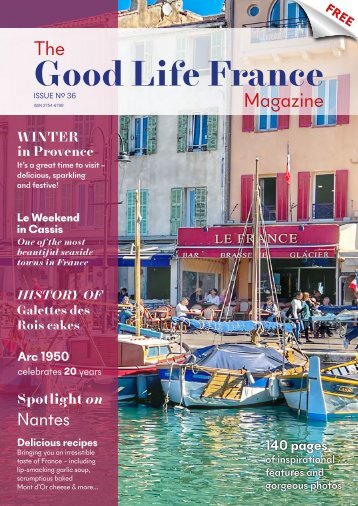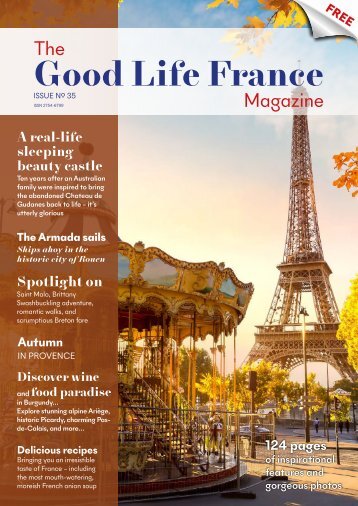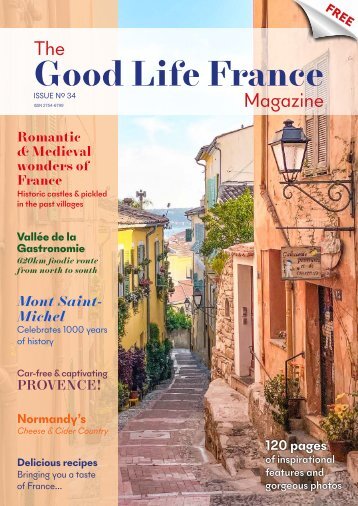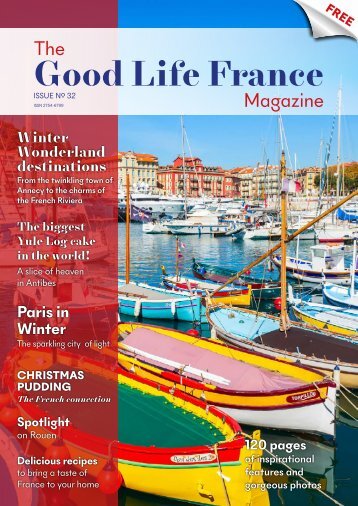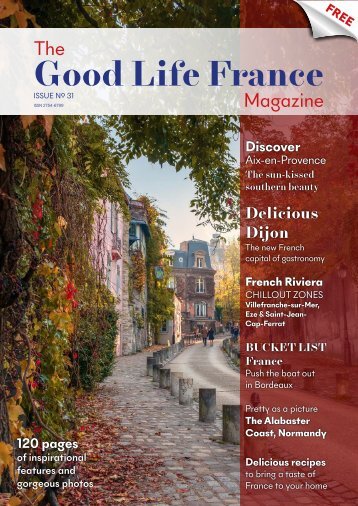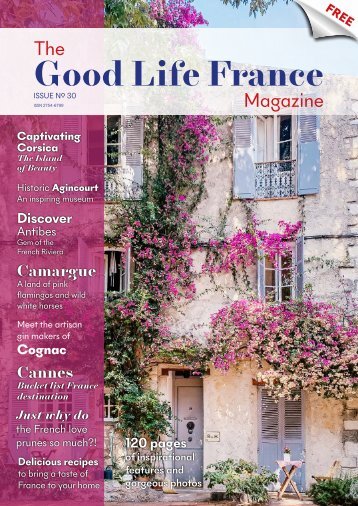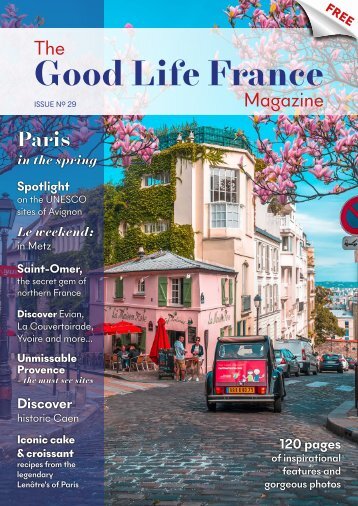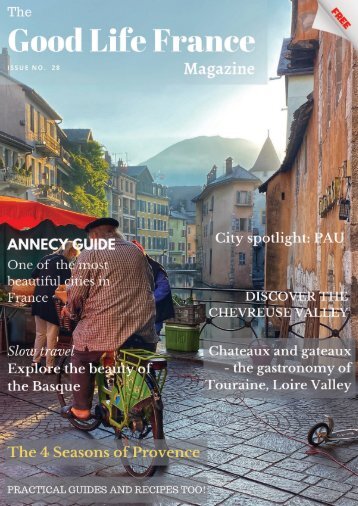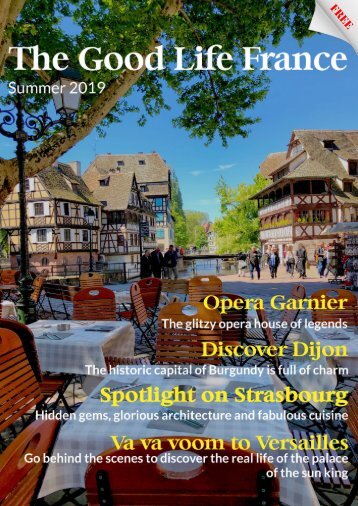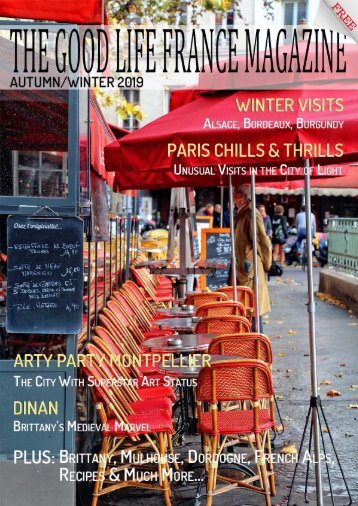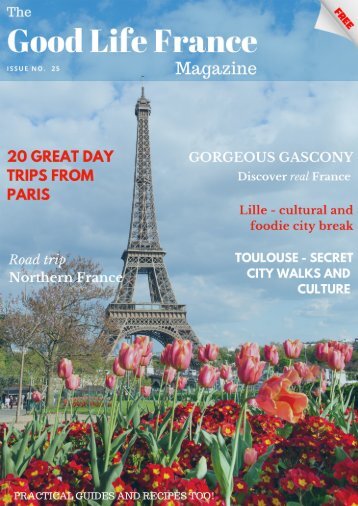
The Good Life France Magazine
The Good Life France Magazine brings you the best of France - inspirational and exclusive features, fabulous photos, mouth-watering recipes, tips, guides, ideas and much more...
Published by the award winning team at The Good Life France
Issue No. 24
Chateau Museum The
Chateau Museum The Chateau Comtal was built during the medieval period but its foundations date back to Roman times and it was strengthened by Louis XIV’s military engineer the great Vauban. Napoleon III was imprisoned here in 1840 and after WWI the body of the British Unknown Soldier lay here in state on the way to be buried in Westminster Abbey. It is now home to a museum displaying many artefacts that include an Egyptian art collection. It’s a little dated but good for a rainy day visit and there are some fascinating exhibitions. Nausicaa Nausicaa, the National Sea centre of France is listed by UNESCO as a “Center of Excellence”. It opened a brand new state of the art extension in spring 2018 which has made it one of the largest aquariums in the world, certainly the biggest in Europe – and it is spectacular. Giant tanks fill the new space and we mean giant. The “Big Tank” holds 10,000m³ of water – that’s enough water to fill four Olympic swimming pools. It is an awesome sight. You can walk right up to it and come face to face with shark, manta rays and shoals of fish. Or you can sit and watch, mesmerised, from benches in front of the tank, it’s strangely relaxing and hypnotic. There are almost 60,000 creatures, 1,600 species, living in the huge underwater world of Nausicaa, as well as a few above water too including penguins. The oldest resident is a sand tiger shark and the biggest resident is the wonderfully intelligent sea lion Speedy. It takes 7km of piping to move all the water round, a massive 17,000 m³ in total. You’ll often spot divers in the tanks cleaning the copious amount of glass with sharks, sea lions and fish of all sorts swishing close by. You get a real feel for what life is like under the ocean.
Beach Breezy for sure but the long sandy beach is great for a breath of fresh air – in fact Charles Dickens came here for the sea air and stayed for three years, bringing his family out to join him. He claimed it was his “favourite watering hole in France”. It was once a very popular beach though less so now and in the 1700s hordes of Britons flocked to Boulogne to enjoy the sea air and the laissez faire attitude of the locals. If the tide is out, wander to the Napoleonic fort on the beach at Le Portel and collect mussels for your dinner as people have for centuries. Climb Napoleon’s column Napoleon Bonaparte spent three years in Boulogne planning an invasion of England. He stayed in a mansion called the Imperial Palace, now a university building, at the Place Godefroy de Bouillon, Napoleon built 2000 boats and was so sure of success he had a victory column erected. His ambitions didn’t go to plan, but the colonnade remains, topped by a statue of the Emperor. You can climb the 296 stairs for a fabulous view across the Channel with the White Cliffs of Dover clearly visible on a fine day. A short walk away, a stone marks the spot where Napoleon issued the first Legion d’Honneur, in fact 2000 of them, sat on a throne, surrounded by 100,000 soldiers. If you’ve no head for heights check out the little museum at the base of the Column which is full of fascinating documents, medals and the original Napoleon statue which was damaged by bombs in WWII. La maison de la beuriere Step back in time at an authentic ancient mariner’s cottage. Climb the steps up the rue du Machicoulis, near Nausicaa, and you’ll find a fisherman’s 19th century house furnished, and with staff dressed in costume.
- Page 3: Editor's Letter Welcome to the Autu
- Page 6 and 7: Features continued 48 Le Weekend: B
- Page 8 and 9: Where to enjoy wine in winter in Fr
- Page 10 and 11: ALSACE Alsace is the quintessential
- Page 12 and 13: BORDEAUX Bordeaux makes for an idea
- Page 14: BURGUNDY Burgundy’s wines are kno
- Page 18 and 19: MOCO There are two exhibitions and
- Page 20: Eat out Locals love: Café Joseph k
- Page 24 and 25: The medieval town of Dinan in Cotes
- Page 26 and 27: Head behind the Basilica of Saint-S
- Page 28: Where to eat in Dinan Just wander t
- Page 32 and 33: Catacombes de Paris Head 20 metres
- Page 34: Janine marsh explores the Côtes d
- Page 37 and 38: Ploumanac’h - Perros-Guirec Perro
- Page 39 and 40: From Paimpol you can take a 10 minu
- Page 41: Where to stay: Hotel Edgar in Saint
- Page 44 and 45: Balades a Raquettes In my search fo
- Page 47: And relax at the Nama Springs Tucke
- Page 50 and 51: Historic centre Looking like someth
- Page 54 and 55: Eat out Enjoy the local favourite,
- Page 56: Strolling through the Dordogne Vall
- Page 59 and 60: The Dordogne flows 472km from Massi
- Page 62 and 63: Destination: Mulhouse
- Page 64 and 65: Mulhouse in Alsace in the northeast
- Page 66 and 67: Tour du Belvedere Not far from Mulh
- Page 68: Where to eat out in Mulhouse Café
- Page 71 and 72: In Le Havre, Perret delivered an id
- Page 73 and 74: uilt in 1859. Recently restored, it
- Page 75 and 76: New and fab: The Architect is run b
- Page 77: private provence tours Customized t
- Page 81 and 82: COLLIOURE Lonna Coleman captures th
- Page 83 and 84: Collioure is easily reachable by tr
- Page 85: july: Sunflowers in Gascony by Sue
- Page 89 and 90: Banking in France Finally, when rec
- Page 91: Register in the social security sys
- Page 95: Why it is essential to talk to your
- Page 98 and 99: ALSATIAN KUGELHOPF (SWEET COFFEE CA
- Page 100 and 101: Leek and Potato Soup INGREDIENTS Fo
- Page 102:
Here in the sticks, in the lovely S
Inappropriate
Loading...
Mail this publication
Loading...
Embed
Loading...



